Welcome to the 11th RW News - a slightly overdue update of what's new and what's been happening to help protect Whio in the Ruahines in recent times. Two new projects are underway on the Eastern side of the ranges so plenty of interest - I hope you find the time to enjoy catching up
The Ruahine Whio Protectors Collective held it's annual hui in late September. For the second year in a row we gathered at River Valley Lodge, east of Taihape right on the Rangitikei River. The date was later than usual, due to another Covid lockdown in August. We were again made very welcome at this lovely venue by Brian Megaw and his family. Whio are sometimes seen on the river nearby so we feel very much at home here. Thanks from everyone from the River Valley team for their excellent hospitality and wonderful food and to
everyone else who contributed by being there and making this meeting a success. It was a slightly smaller group than in recent times, due mostly to uncertainty over the dates and Covid. Once we had gathered we formed a Whio Whanau bubble and were able to take our masks off.
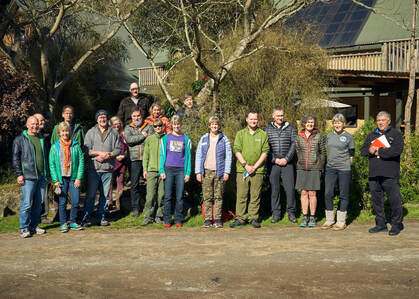
There was plenty of talk and
presentations. Much has been going on since we last met
including 2 projects starting up on the eastern side of the Ruahines -read on to learn more. If you would like to see the record of the meeting let me know.
presentations. Much has been going on since we last met
including 2 projects starting up on the eastern side of the Ruahines -read on to learn more. If you would like to see the record of the meeting let me know.
Exciting News From the Makororo River
"A few words from Peter Meridith (CHB Forest and Bird)"
Sunday morning 3rd October slowly making river crossings in the spring flush. Cleaning traps and enjoying the beauty of the Makaroro valley again after having the winter off, l was brought to attention by a bird call, familiar but not recognised immediately, heads up, I know what that is, just around rocks beyond a pair of whio, the male having his say. A pair, that made my day already.
I have not seen a pair here before, and only ever seen one loner in 2019. They seemed quite at home, settled, not worried about me. After a long rewarding observation, the male obviously bigger and noisy, I skirted them and crossed the river, happy and hopeful that they are here to stay.
Several traps later I met a fisher hunter man of all seasons type. I said gidday mate, I 've just seen a pair of Whio. His reply left me speechless, (oh, they are everywhere, I've seen five). Unsure, but happy to believe him, I carried on to finish the trap line. On my arrival at Barlow hut,a single skidded into riffles in front
Making my way downstream, and sure as, bobbing down a fast moving rapid,I saw another pair, this was unbelievable. Heading out,I was careful in approaching the location of the first pair, They were not to be seen, but with theatrical timing they came flying back in, with sun light splashing around them. This was a magic day.
To have such an unforgettable day was a great reward, but one has to give thanks to all the hours of all the volunteer trappers and dedicated DOC people whose efforts have brought the whio numbers up in the Ruahines to a point where these territorial beauties have come back to visit and hopefully stay.
"A few words from Peter Meridith (CHB Forest and Bird)"
Sunday morning 3rd October slowly making river crossings in the spring flush. Cleaning traps and enjoying the beauty of the Makaroro valley again after having the winter off, l was brought to attention by a bird call, familiar but not recognised immediately, heads up, I know what that is, just around rocks beyond a pair of whio, the male having his say. A pair, that made my day already.
I have not seen a pair here before, and only ever seen one loner in 2019. They seemed quite at home, settled, not worried about me. After a long rewarding observation, the male obviously bigger and noisy, I skirted them and crossed the river, happy and hopeful that they are here to stay.
Several traps later I met a fisher hunter man of all seasons type. I said gidday mate, I 've just seen a pair of Whio. His reply left me speechless, (oh, they are everywhere, I've seen five). Unsure, but happy to believe him, I carried on to finish the trap line. On my arrival at Barlow hut,a single skidded into riffles in front
Making my way downstream, and sure as, bobbing down a fast moving rapid,I saw another pair, this was unbelievable. Heading out,I was careful in approaching the location of the first pair, They were not to be seen, but with theatrical timing they came flying back in, with sun light splashing around them. This was a magic day.
To have such an unforgettable day was a great reward, but one has to give thanks to all the hours of all the volunteer trappers and dedicated DOC people whose efforts have brought the whio numbers up in the Ruahines to a point where these territorial beauties have come back to visit and hopefully stay.
The Manaaki Ruahine Makaretu Valley Restoration Project (MRM) "has had a pretty big year". - Anthony Behrens
Our Community Agreement with DOC covers an area that goes from DOC's abandoned pine plantation on Kashmir Road, south through the Mākāretu Valley to the source of the Manawatū River. Our southern border is the Apiti Track, our western border is the Longview Track to Leon Kinvig, and our eastern border is farmland. Our agreement is for control of weeds as well as pest animals
We've had a couple of wilding pine pulling expeditions at Kashmir Road this year. We're really just concentrating on stragglers in the 15 hectares that we've cleared. The rest of the wildings have gotten away on us. Trees that were knee-high when we started are now up to 4-5 metres tall. We've also done a little bit of gorse control on the track in to Awatere Hut. But our biggest weed success has been the removal of a lone Bitter Willow on the banks of the river by Awatere Hut in early October.
Our Wānanga Trapline was installed in January, and we've held a wānanga every month since then. The line runs from the Kashmir Road carpark, in to Awatere Hut before heading down the Mākāretu Strem for 400 metres. I haven't tallied the numbers, but we've introduced a lot of new people to trapping AND the Ruahine. It's an ideal place for newbies. It's a short tramp, but has a few decent climbs. It involves alpine, forest and river work. We start every wānanga with coffee, cake and a chat. We have lunch at the hut or on the river bank. Since January we've removed: 21 Rats. 9 Hedgehogs. 6 Possums. 3 Mice. 2 Weasels. 4 Stoats.
As well as the usual stoat control - we want to protect the occasional whio that comes for a feed in the Mākāretu in the hope that it will settle there - we are targeting possums. We've installed the first 2 of 6 AutoTrap AT220s and are watching the results closely. We'll keep you in the loop. Our first 2 AT220s have been donated by Robert Winters of Cafe Royale in Palmerston North.
Our Community Agreement with DOC covers an area that goes from DOC's abandoned pine plantation on Kashmir Road, south through the Mākāretu Valley to the source of the Manawatū River. Our southern border is the Apiti Track, our western border is the Longview Track to Leon Kinvig, and our eastern border is farmland. Our agreement is for control of weeds as well as pest animals
We've had a couple of wilding pine pulling expeditions at Kashmir Road this year. We're really just concentrating on stragglers in the 15 hectares that we've cleared. The rest of the wildings have gotten away on us. Trees that were knee-high when we started are now up to 4-5 metres tall. We've also done a little bit of gorse control on the track in to Awatere Hut. But our biggest weed success has been the removal of a lone Bitter Willow on the banks of the river by Awatere Hut in early October.
Our Wānanga Trapline was installed in January, and we've held a wānanga every month since then. The line runs from the Kashmir Road carpark, in to Awatere Hut before heading down the Mākāretu Strem for 400 metres. I haven't tallied the numbers, but we've introduced a lot of new people to trapping AND the Ruahine. It's an ideal place for newbies. It's a short tramp, but has a few decent climbs. It involves alpine, forest and river work. We start every wānanga with coffee, cake and a chat. We have lunch at the hut or on the river bank. Since January we've removed: 21 Rats. 9 Hedgehogs. 6 Possums. 3 Mice. 2 Weasels. 4 Stoats.
As well as the usual stoat control - we want to protect the occasional whio that comes for a feed in the Mākāretu in the hope that it will settle there - we are targeting possums. We've installed the first 2 of 6 AutoTrap AT220s and are watching the results closely. We'll keep you in the loop. Our first 2 AT220s have been donated by Robert Winters of Cafe Royale in Palmerston North.
The RWP Trust gave us a couple of A24s with Chirps - they were installed in September. They have become part of a separate programme - our Autotrap Programme. It's run by Doug and Emma Gregg. It will cover the entire project area and will probably involve moving the AT220s around as they clear an area of possums.
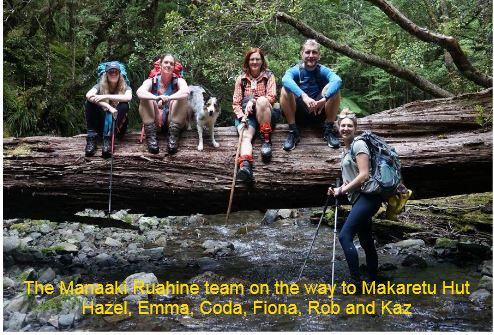
In August the project was successful in its application to the Horizons Regional Council's Kanorau Koiora Taketake contestable fund. The application was to trap the source of the Manawatū River and aims to work closely with the Ngamoko/Norsewood community. The money will enable us to install 20 double set DOC 150s, 20 Double Set DOC 200s, 42 A24s and 4 AT220s. The double set boxes will be part of a community trapping programme, that will encourage more newbies into the forest. The A24s will be placed in more inaccessible areas, while the AT220s will become part of the greater project's Auto Trap programme - but will be put to work within the Horizons area of the Ruahine Forest Park. Yes…the Horizons area includes Public Conservation Land. Weird huh?
We have also received funding from Property Brokers and Ballance Agrinutrients. This money will be very useful for bait, petrol and sundry equipment and expenses.
We have a couple of donors that require receipts which was a bit of an issue for us until Environment Network Manawatū offered to handle big donations for us. ENM used us as a bit of an experiment and are now offering the same service to other small organisations that aren’t legal entities.
MRM have also started installing a new section of 15 Double Set DOC 150s downstream from Awatere Hut. These were kindly built for the project by Taiao Ora Contracting in Dannevirke and Roger Munn, a Palmerston North retiree. Hardware was bought with funds from an anonymous donor. We use 150s because they’re lighter to carry in. We liaise with Friends of the Flora, who replaced their entire network of box traps with 150s last year. We hope to run a line of them all the way from Awatere Hut, past Happy Daze, then on to Mākāretu Hut. This will be called the Three Huts Trapline and is for experienced trappers, trampers and hunters. If you’d like to volunteer, keep an eye on our Facebook page - www.facebook.com/manaakiruahine - for shift notices.
I’ve raved on a bit, so won’t tell you about our most exciting news…the Manaaki Ruahine app. You’ll have to wait for the next newsletter.
I’ve probably missed a whole lot, so sorry if I’ve missed your contribution. Thanks to all our volunteers, donors and Facebook fans. Most of our news goes up on this page as it happens. Follow us. Like us. Keep in touch.
I’ve probably missed a whole lot, so sorry if I’ve missed your contribution. Thanks to all our volunteers, donors and Facebook fans. Most of our news goes up on this page as it happens. Follow us. Like us. Keep in touch.
Oroua and Pohangina - Janet Wilson
Last season was largely business as usual for the Oroua trap lines at least. Catch numbers were well down We received quite a bit of publicity . The project has been well supported by the local DOC office, particularly by ranger Abi Whiteman who ensures there is a regular supply of 180 eggs/month from Zeagolds. There was a well supported Whio Awareness Month walk. A good number Massey University Wildlife Club members came and then some returned and helped with 2 further trap rebaits. We celebrated 10 years of my involvement with the project with a function and cake at Pohangina Base. In August the 9 traps lost to vandalism were replaced by a good keen team of 15 volunteers. The year is summarised below.
THE GOOD
Last season was largely business as usual for the Oroua trap lines at least. Catch numbers were well down We received quite a bit of publicity . The project has been well supported by the local DOC office, particularly by ranger Abi Whiteman who ensures there is a regular supply of 180 eggs/month from Zeagolds. There was a well supported Whio Awareness Month walk. A good number Massey University Wildlife Club members came and then some returned and helped with 2 further trap rebaits. We celebrated 10 years of my involvement with the project with a function and cake at Pohangina Base. In August the 9 traps lost to vandalism were replaced by a good keen team of 15 volunteers. The year is summarised below.
THE GOOD
- Trapping largely unaffected by Covid
- Approx 120 volunteer days in the field on Oroua traps lines alone.
- Continued support from the Manawatu Branch NZDA
- Regular interest from new volunteers – strong involvement by members of Palmerston North Tramping and Mountaineering Club. New community volunteers coming forward.
- Auto Lure pump for stoats available from Good Nature. Appear to be working well.
- Thanks to Zeagolds and DOC we have a great supply of eggs saving lots of money.
- Good publicity throughout the year
- Flooding in November – nests destroyed?
- Fewer whio sighting in the Pohangina and Upper Oroua – is this the result of the 2019/20 stoat boom
- Covid!
- Trap vandalism – 9 traps lost on the Iron Gate Track line.
- Weather prevented our pre winter Pohangina trap line check being completed
Over the next few months we are helping Patrick Garvey ( Manaaki Whenua - Landcare) with a bait trial using some of the Oroua traps , including the Rangi/Deadmans loop. The photo below is the team heading out recently to set up the trial . Thanks Steven, Mark, Steve, Malcolm, Kirsten and Michelle (photo by Janet).
Read more about the results of the previous trial we helped out with at https://www.pfhb.nz/assets/Article-Documents/Garvey-Ferret-odour-report.pdf
Read more about the results of the previous trial we helped out with at https://www.pfhb.nz/assets/Article-Documents/Garvey-Ferret-odour-report.pdf
Longview/Eastern Pohangina - Ben Douglas
Catch numbers have been very low compared to other years. Thanks to Ron Sherk for his help maintaining this long line last season. Now the snow has melted it's time to get into another round of rebaiting.
The graphs show catch numbers since the line was installed in 2016
The graphs show catch numbers since the line was installed in 2016
Ruahine Whio Protection Trust Chair's Report September 2021
This Chair's report marks the 7th Annual Meeting of the Ruahine Whio Protection Trust. It covers the year to 31 March 2021. This was a rather different year - the first 6 weeks in Level 3 or 4 lockdown due to Covid 19 and much of the rest of the year with a degree of uncertainty affecting our lives. It has certainly added another dimension to life.
Trustees
Once again I would like to thank our trustees Colin Leigh, Sue Moore, Ian Rasmussen for all the work they have put in over the year. We have 4 trustees which is our minimum number. I feel it would be beneficial to enlist another 1 or 2 interested people as trustees to spread the work and add a degree of resilience.
Secretary
Nancy Braithwaite resigned as secretary during the year. Thanks to Nancy for the time she put in as Secretary.
Meetings
The trust has met semi regularly throughout the year. Thanks to Colin for hosting many of these meetings.
In August 2020 we convened another annual meeting of the Ruahine Whio Protectors Collective, this year beside the Rangitikei River at River Valley Lodge, Taihape Again , there was an excellent turn out of interested people at this annual meeting including representatives from Nga Whenua Rahui.
Website
Graham Peters continues to manage the RWP website and keeps adding new information. Thanks to Anthony Behrens for his technical support.
Nancy Braithwaite still looks after the Ruahine Whio Protectors Facebook page. At last count there were 548 followers up from 351 last year, an increase of 197.
Grant Applications
This year we have made 2 funding applications and signed the amended Deed of Grant for our combined DCCF5/6 bid.
1. DOC Community Conservation Fund CCF6
Our funding bid to the DOC CCF6 funding round was granted less than we applied for. Holdups due to covid resulted in less of our CCCF 5 funds were spent and DOC extended the time period out to spend these grants. It was agreed that we would combine our CCF5 and 6 funds and extend the time period out until June 2022. This has been a very good solution to a disrupted year and has helped provide certainty for funding the Te Potae project up until that time.
2. Horizons Regional Council
For ongoing funding for the Te Potae Project on PCL $7500.00. Thanks to Horizons Regional Council for the ongoing support.
Application of funds
This year we have funded:
* All flights to service the Te Potae O Awarua trap lines on PCL.
* The purchase of Erayz ,gas, auto lure pumps, egg boxes etc.
* 8 phones for the Te Potae project to be used for the "Walk the Line" app.
* 15 Good Nature A24 traps with Chirp to River Valley for use on the Rangitikei River.
Donations
We have received donations this year totalling $372.00
*$192 River Valley Lodge
*$150 Bruce Philpott
For ongoing funding for the Te Potae Project on PCL $7500.00. Thanks to Horizons Regional Council for the ongoing support.
Application of funds
This year we have funded:
* All flights to service the Te Potae O Awarua trap lines on PCL.
* The purchase of Erayz ,gas, auto lure pumps, egg boxes etc.
* 8 phones for the Te Potae project to be used for the "Walk the Line" app.
* 15 Good Nature A24 traps with Chirp to River Valley for use on the Rangitikei River.
Donations
We have received donations this year totalling $372.00
*$192 River Valley Lodge
*$150 Bruce Philpott
Fundraising
Apart from grants and a small number of donations we havn't done a lot of fundraising in the past. The first idea of an garden and art event was abandoned due largely to uncertainties brought on by Covid. We decided on a calendar and this turned out to be very successful. Thanks to designer Anthony Behrens, the photographers who donated the photos and everyone who bought one We produced 300 calendars, sold out well before xmas and raised approx $4000.00.
Publicity/Awareness Raising
I would also like to thank everyone else who has helped out during the year and to acknowledge the many hours of field work put in by many of us involved with Ruahine Whio Protection.
Janet Wilson
Chair Ruahine Whio Protection Trust
Apart from grants and a small number of donations we havn't done a lot of fundraising in the past. The first idea of an garden and art event was abandoned due largely to uncertainties brought on by Covid. We decided on a calendar and this turned out to be very successful. Thanks to designer Anthony Behrens, the photographers who donated the photos and everyone who bought one We produced 300 calendars, sold out well before xmas and raised approx $4000.00.
Publicity/Awareness Raising
- Newsletters -only 1 Ruahine Whio News was produced on behalf of the Collective(October 2019). I think there should be at least 2 per year!
- Janet took a walk to the Oroua trap lines for Conservation Week March 2021.
I would also like to thank everyone else who has helped out during the year and to acknowledge the many hours of field work put in by many of us involved with Ruahine Whio Protection.
Janet Wilson
Chair Ruahine Whio Protection Trust
Introduction to Mauri Oho - Lisa Whittle
Background. Species loss is a silent plague. It creeps up insidiously. Over time this plague of silence has crept Northwards from the Remutaka Range and through the Tararua Range. But while species such as kiwi, whio, robin and kākā disappeared from these areas, they retained refuge habitat in pockets of the Ruahine Range. It was only a matter of time before the whole range succumbed.
Background. Species loss is a silent plague. It creeps up insidiously. Over time this plague of silence has crept Northwards from the Remutaka Range and through the Tararua Range. But while species such as kiwi, whio, robin and kākā disappeared from these areas, they retained refuge habitat in pockets of the Ruahine Range. It was only a matter of time before the whole range succumbed.
The critical importance of the problem was recognised by Māori Trust Landowners as well as key personel in DOC and a band of dedicated individuals. Over the last thirteen years these groups have worked together to establish a network of traps with the goal of whio and kiwi recovery in mind. This work has been very successful. Whio have bounced back from low numbers to the extent that some rivers are at capacity with young birds moving into streams in unprotected areas. The kiwi population has stabilised and is likely increasing. Other bird species have also clearly benefitted from the trapping.
In the Northern Ruahine the neighbouring land in Kererū district is also of particular significance. Streams run from the range forming incised gorges through the farmland. Many of these streams retain a significant amount of native vegetation. It is clear to even the most casual observer that this is a farming community with a tradition of respect for the environment.
The Mauri Oho Vision. In essence the vision of Mauri Oho is to build on success. Current trapping has protected some rivers in the range, but many others remain unprotected. The existing kiwi populations live in isolated pockets. The backcountry goal of Mauri Oho is to extend trapping so that the whole of the Northern Ruahine Range (roughly half of the whole range) is covered with traps at sufficient density to suppress mustelids to extremely low levels and to locally suppress rats. This will guarantee a thriving whio population and will provide secure corridors to connect the existing kiwi populations. It will support the recovery of all bird species as well as bats, weta, skinks and geckos.
The success of the trapping brings with it another opportunity. Dead Dog Stream currently has whio within 2 kilometres of the Thorn Flat Station boundary and it is likely that they are already entering farmland from time to time. The front country goal of Mauri Oho is to lay the welcome mat for the return of whio and other manu to the Kererū district. Our work will involve trapping along streams running through farmland, fencing along stream boundaries, and riparian recovery work such as weeding and planting with appropriate native species.
As well as species recovery, this work will form an important step in a source-to-sea model of returning the rivers of the Hawkes Bay region to full health. Just as the existing backcountry trapping gives that work a head start, the existing tradition of respect for the environment within the Kereru farming community gives this work a head start. Our goal is to show that a thriving ecology can exist in harmony with a viable farming community.
All of the front country work will take place with full consultation with landowners. So far we have experienced strong positive support from community members and we are really appreciative of that support. Me mahi tahi tātou (we should all work as one).
The Mauri Oho Timetable. We are currently funded for three years. Backcountry work will involve trap building, ground truthing future trap lines, track cutting and trap deployment. This work will take place over summer months.
The Mauri Oho plan is to extend the trap network, service these newly deployed traps and work in tandem with the community of trappers. We don’t intend to duplicate or take over trap servicing of the existing lines in the backcountry.
Front country work has begun with an extensive phase of consultation with landowners and community members to develop a specific plan. Implementation of the plan through fencing and riparian recovery work will take place year round.
In the Northern Ruahine the neighbouring land in Kererū district is also of particular significance. Streams run from the range forming incised gorges through the farmland. Many of these streams retain a significant amount of native vegetation. It is clear to even the most casual observer that this is a farming community with a tradition of respect for the environment.
The Mauri Oho Vision. In essence the vision of Mauri Oho is to build on success. Current trapping has protected some rivers in the range, but many others remain unprotected. The existing kiwi populations live in isolated pockets. The backcountry goal of Mauri Oho is to extend trapping so that the whole of the Northern Ruahine Range (roughly half of the whole range) is covered with traps at sufficient density to suppress mustelids to extremely low levels and to locally suppress rats. This will guarantee a thriving whio population and will provide secure corridors to connect the existing kiwi populations. It will support the recovery of all bird species as well as bats, weta, skinks and geckos.
The success of the trapping brings with it another opportunity. Dead Dog Stream currently has whio within 2 kilometres of the Thorn Flat Station boundary and it is likely that they are already entering farmland from time to time. The front country goal of Mauri Oho is to lay the welcome mat for the return of whio and other manu to the Kererū district. Our work will involve trapping along streams running through farmland, fencing along stream boundaries, and riparian recovery work such as weeding and planting with appropriate native species.
As well as species recovery, this work will form an important step in a source-to-sea model of returning the rivers of the Hawkes Bay region to full health. Just as the existing backcountry trapping gives that work a head start, the existing tradition of respect for the environment within the Kereru farming community gives this work a head start. Our goal is to show that a thriving ecology can exist in harmony with a viable farming community.
All of the front country work will take place with full consultation with landowners. So far we have experienced strong positive support from community members and we are really appreciative of that support. Me mahi tahi tātou (we should all work as one).
The Mauri Oho Timetable. We are currently funded for three years. Backcountry work will involve trap building, ground truthing future trap lines, track cutting and trap deployment. This work will take place over summer months.
The Mauri Oho plan is to extend the trap network, service these newly deployed traps and work in tandem with the community of trappers. We don’t intend to duplicate or take over trap servicing of the existing lines in the backcountry.
Front country work has begun with an extensive phase of consultation with landowners and community members to develop a specific plan. Implementation of the plan through fencing and riparian recovery work will take place year round.
Our Funding. Mauri Oho has been funded through a generous grant from the Jobs for Nature Community Conservation Fund. We are extremely grateful for this generous support. Having said that, the Jobs for Nature fund was designed to support employment and this meant that, to fit the Jobs for Nature criteria we had to reduce capital expenditure to a fraction of what we had originally planned. Over the three years of the project -- and indeed, beyond – we will actively seek support to recover those shortfalls.
Our Website. For more information check out our website - maurioho.nz
Thanks to designer Anthony Behrens and the photographers who have donated images again - RWPT have produced another stunning calendar for 2022. If you havn't already got one, contact Janet jwilson@inspire.net.nz. Cost is $20.00+pp. They can also be purchased at Bivouac stores in Palmerston North and Wellington but be in quick before they run out.
Our Website. For more information check out our website - maurioho.nz
Thanks to designer Anthony Behrens and the photographers who have donated images again - RWPT have produced another stunning calendar for 2022. If you havn't already got one, contact Janet jwilson@inspire.net.nz. Cost is $20.00+pp. They can also be purchased at Bivouac stores in Palmerston North and Wellington but be in quick before they run out.

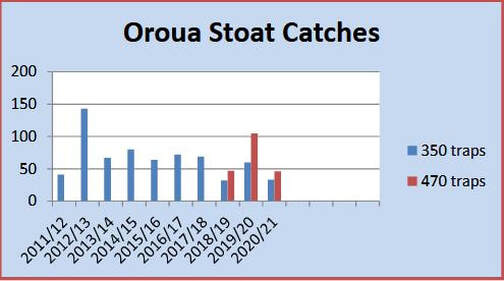
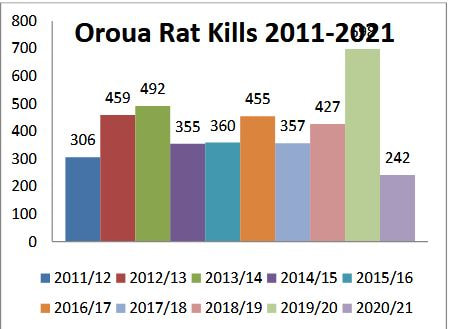
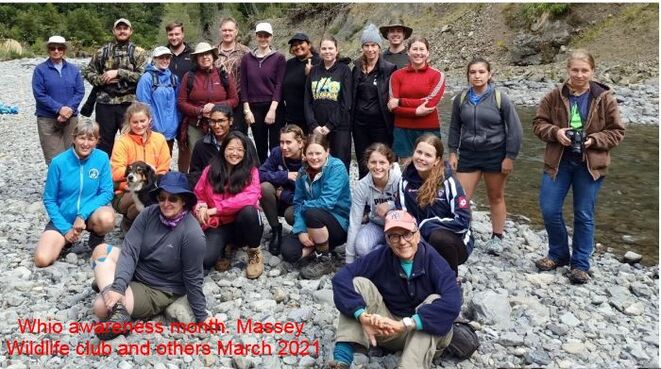
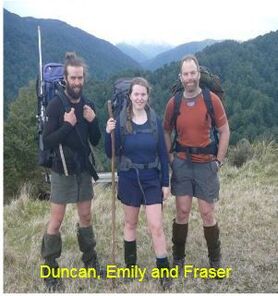
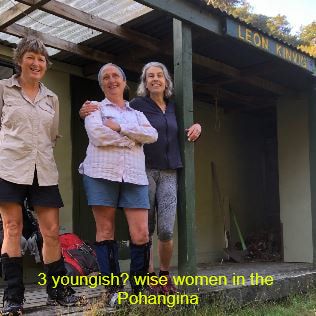
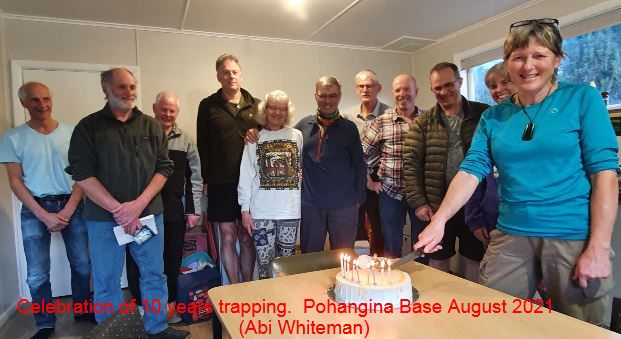
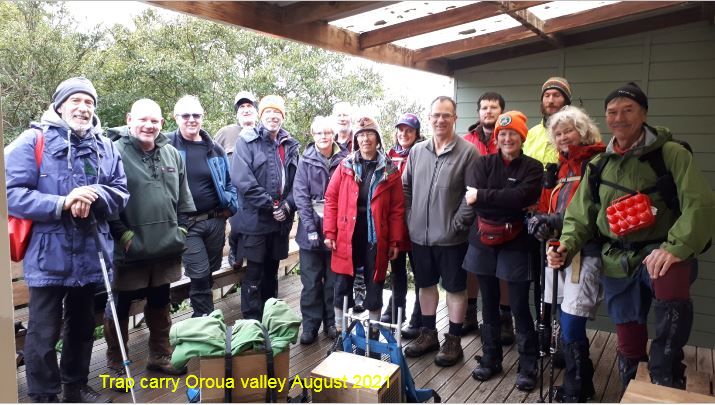
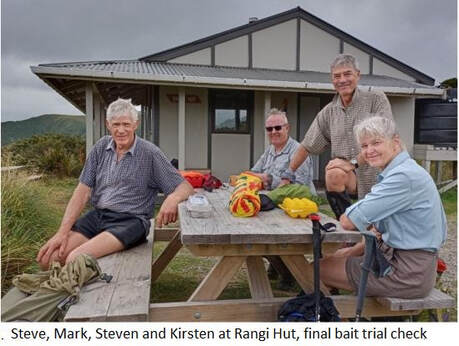
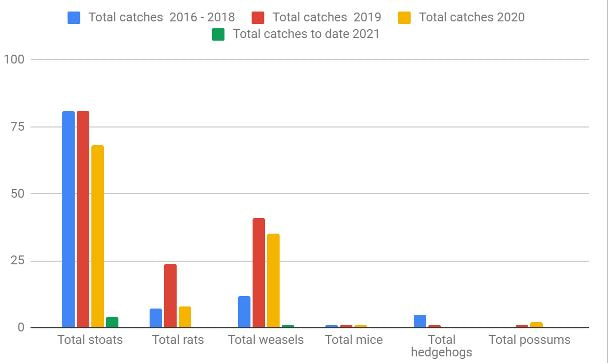
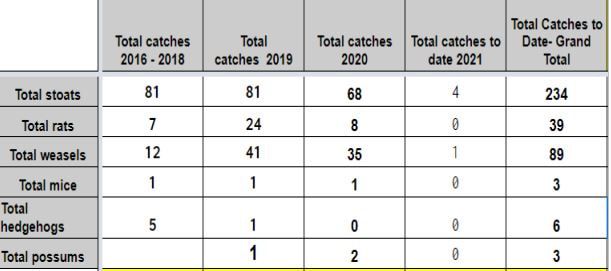
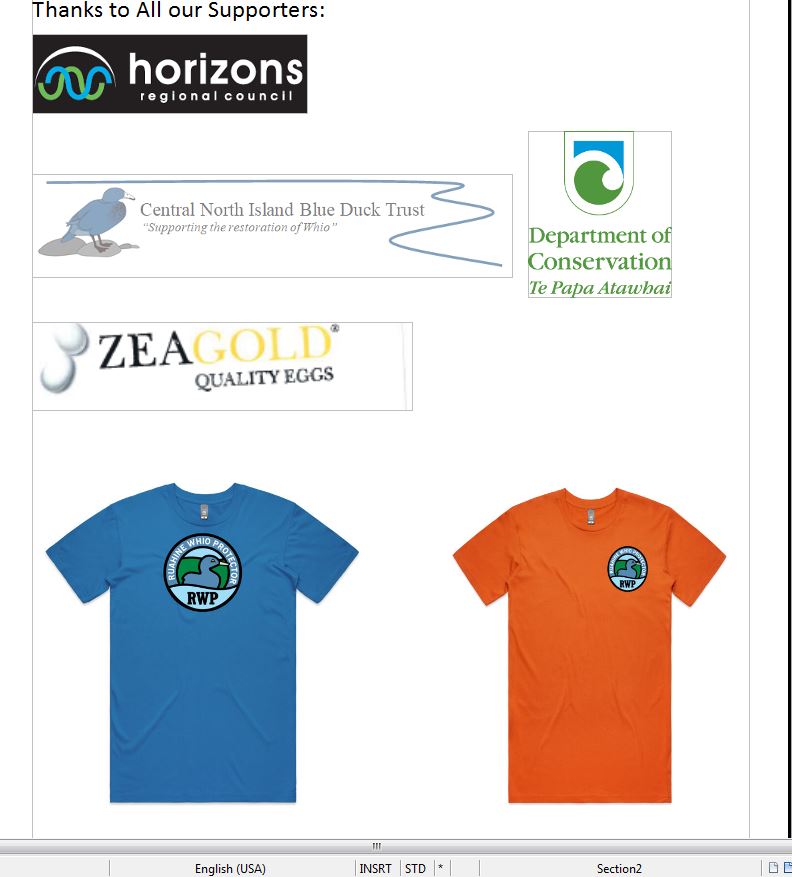
 RSS Feed
RSS Feed